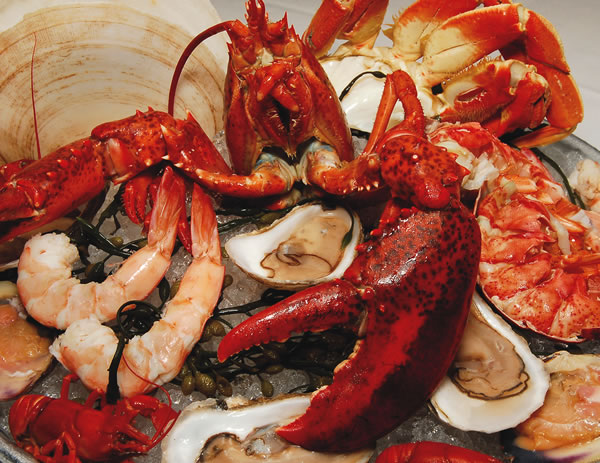10 Shellfish Facts That You Probably Didn’t Know

Shellfish thrive as intriguing little weirdos who look like tiny versions of the creatures that once tried to take out Godzilla in old monster flicks. But what do you really know about them, aside from their ability to be a celebrated main ingredient of coastal dives? Let’s take a closer look at these shelled invertebrates that swim, float, and live under the sea.
Lobsters taste with their legs and chew with their stomachs

The leg and feet hairs of a lobster are chemosensory, and they use their antennas to track down possible food. They’re also fitted with a gastric mill, essentially a set of teeth in their stomachs, located behind their eyes.
Oysters can and will change their sex

All oysters are born male and will swap genders at least once. Given that they are born with both sets of reproductive organs, oysters can also fertilize their own eggs.
A sea urchin’s mouth is known as “Aristotle’s Lantern”

Located on the underside of a sea urchin’s body, their unique, complex mouth has five sharp teeth that can drill a hole into a rock. These chompers can also be venomous, so watch out on the beach and at your favorite sushi bar.
Lobsters are sometimes cannibals

Lobsters have eaten each other when in the same cage, as though in some type of underwater Thunderdome, but they now seem to be doing it in the wild as well. Typical cases involve adults eating their young.
The phrase “happy as a clam” is incomplete

The longer version of the term is “as happy as a clam at high water,” though it’s rarely used. The idiom makes more sense in full because a clam at high tide is typically free from predators.
Crabs communicate by the sound of their claws and pincers

Crabs create sounds by drumming and flapping their sharp appendages in what can only be described as crustacean Morse code. Some species of crab have one especially large claw used for communication.
Lobsters pee out of their faces, especially when they want blood or sex

Lobsters’ antennal glands are the greenish-brown spots near the antennae, and it’s custom for them to pee at each other during battle or courtship. The female, who makes the first move, pees in a male’s shelter several times, creating a pheromonal state of relaxation for the male.
One shrimp can lay a million eggs

In a single season, a female shrimp will produce an absurd amount of offspring, which will hatch in two weeks’ time. They can also survive in any water conditions as long as there’s food, so a breeding area can be pretty much anywhere.
Lobsters used to be served to prisoners who absolutely hated it
Back in colonial times, in a stunning comparison to their high-brow status these days, lobsters were constantly fed to prisoners (and slaves). They were cheap, omnipresent, and gross. Prisoners got so sick of eating lobster that a rule to reduce their serving to only three days a week was enforced.
The mantis shrimp kills its prey in the craziest, most brutal way imaginable

The mantis shrimp dismembers other shellfish with its two appendages that carry the same velocity of a rifle gunshot — moving so quickly that they boil the water around them, ultimately creating a shockwave that can also kill prey. To put that into perspective, if a human had utilized that same force in their arms, they would be able to throw a rock into outer space! Not only that, but their shell is so intense that it’s inspired actual human body armor.






















